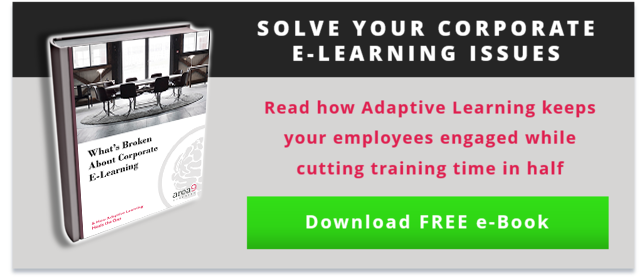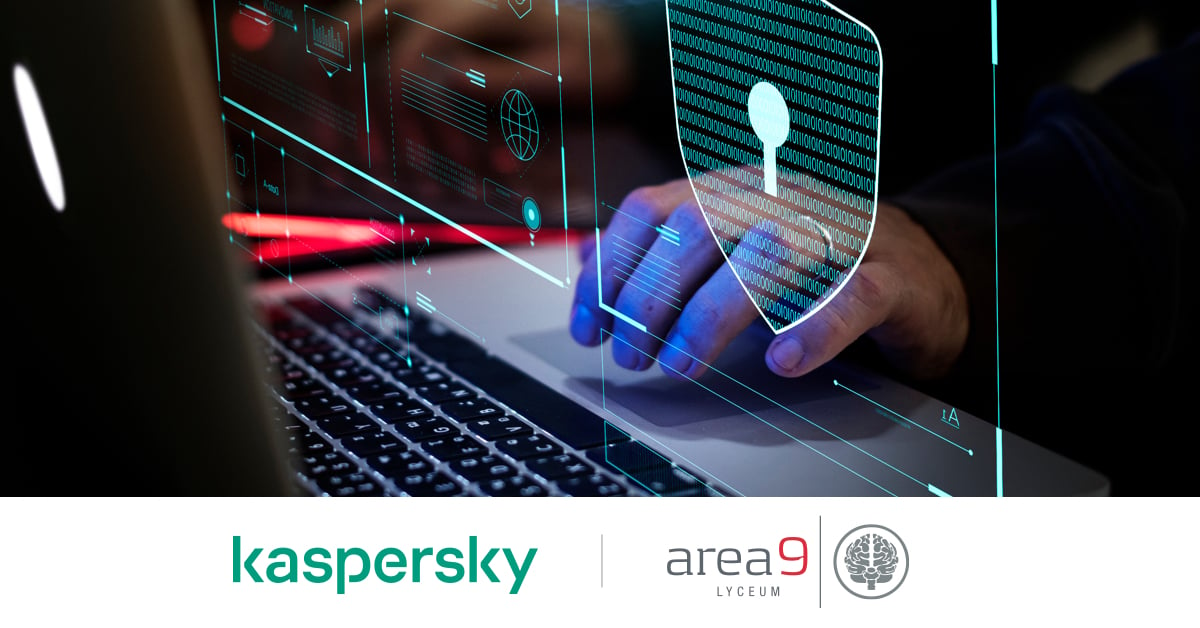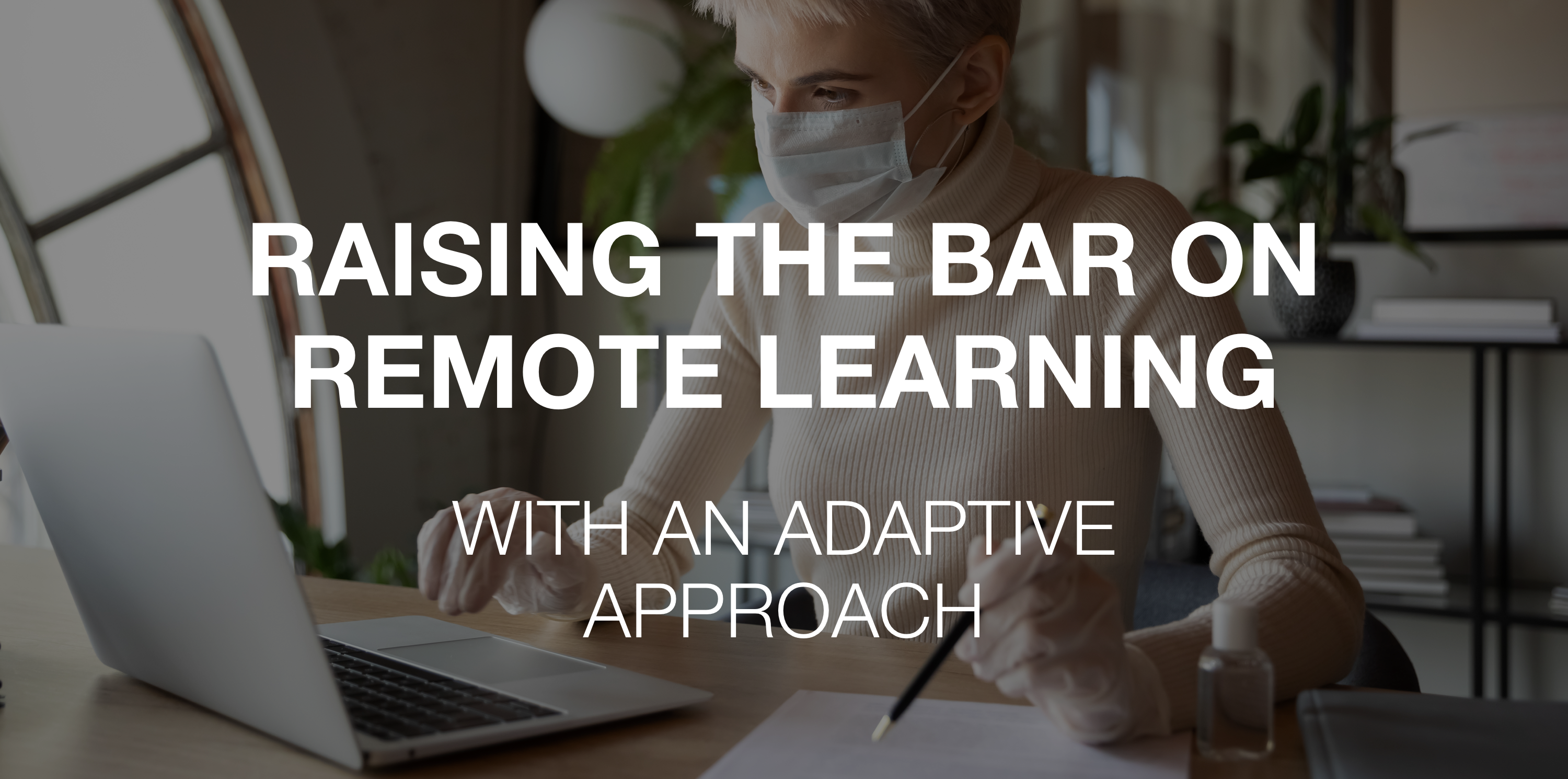Corporate e-learning has deep roots, arguably dating back to the very first modern “distance education course” developed by Isaac Pitman in the mid-1840s. Pittman sent his correspondence-course students shorthand texts transcribed onto postcards and received transcriptions back from them to be graded. Feedback was a crucial element.
One hundred and seventy years later, modern e-learning hasn’t improved much on Pitman—and, in some ways, is much worse. The basic components are unchanged: present students with information (and sometimes a lot of it) and evaluate. This approach of direct instruction followed by summative assessment is the core of virtually every corporate e-learning training course. But other than a simple quiz that typically concludes such courses, feedback has been lost. Worse still, the typical summative test does nothing to evaluate understanding or long-term knowledge retention. We have reached an “Emperor’s new clothes” situation: collectively, we say that we are making a difference when the evidence clearly shows otherwise.
The time has come to reinvent corporate e-learning, which in the U.S. amounts to a nearly $100 billion market. The flaws are well-known: learner fatigue and dissatisfaction and widespread “check the box” attitudes for compliance training. Plus, there’s little evidence to suggest that traditional corporate e-learning results in any sustained learning.
The stakes are higher, too, for corporate e-learning and development program, which must address an urgent problem: reskilling workers with greater efficiency and effectiveness to keep pace with changes in the technology-enabled workplace. With new technologies such as robotics, artificial intelligence (AI), and the internet of things entering everyday business applications, now is the time to make the most of the human-plus-machine partnership.
The Technology-Enabled Workplace
Technological in-roads are being made across the business landscape, changing jobs and functions—eliminating some due to automation, but also expanding the knowledge and skill requirements for many others. As consulting company Cognizant observed in a recent report, “Whether you work in the front office, back office or the C-suite, you’ll soon need to know how to collaborate with artificial intelligence (AI) systems. Indeed, the rise of automation and AI is raising questions about the employable skills, attitudes and behaviors necessary for people to participate in the future of work.” Given the magnitude of these ongoing changes, the perplexing question for learning and development (L&D) teams is how to design and deliver the level of training and development needed, with greater efficiency and a higher level of effectiveness.
Traditional, static e-learning will not suffice and falls short of the requirements of delivering engaging content, detecting and filling knowledge gaps, teaching new knowledge, reinforcing skill-building, and increasing both competence and confidence. A “one-size-fits-none” approach, whether online or classroom-based, is neither efficient nor effective because it lacks the required personalization.
The answer is adaptive learning, combining the latest in computer science with deep knowledge of cognitive science. For corporate e-learning, adaptive learning promises many benefits, including: greater time efficiency to achieve competency; greater competence to support better outcomes; personalized learning across heterogeneous groups with different backgrounds, experiences, and knowledge; and the ability to capture learner data.
Knowledge and Skills Gaps
The magnitude of knowledge and skills gaps among the existing workforce and the next generation of employees is swiftly gaining attention. A recent survey of hundreds of top business executives and higher education institutions found that only 27% of their workforce and 20% of students have the necessary skills to work with and use emerging digital technology. Even with this awareness, businesses and educators have been slow to redesign education, update training models, and collaborate with each other to create a better learning environment. Widespread skill gaps and a poorly prepared workforce undermine the competitiveness of business and the productivity needed to sustain growth.
Given that greater deployment of advanced technologies such as AI and robotics is now a reality, it poses a significant problem if more people and developing economies are left behind because they lack the requisite skills. As UN Secretary General António Guterres observed in his address to the 73rd UN General Assembly, “Technological advances may disrupt labour markets as traditional jobs change or disappear, even as the number of young job-seekers continues to grow. Retraining will be needed at previously unimaginable scales. Education must adapt, from the earliest grades. And the very nature of work will change….”
The only way to bridge this gap is with a 21st century learning approach. The century-old “factory model” of training must be brought into the digital era, using AI to update learning approaches with greater personalization—while keeping learners motivated and engaged.
The Drawbacks of Gamification
Corporate e-learning has tried to address learner fatigue, which is endemic with  traditional, static e-learning. The use of game-like scenarios for teaching and game mechanics for motivation, known as gamification, is a trending approach to e-learning. Gamification aims to make study time more enjoyable, but generally does not increase the efficiency of time spent studying. The reason? All learners are still exposed to the same material regardless of their level of mastery.
traditional, static e-learning. The use of game-like scenarios for teaching and game mechanics for motivation, known as gamification, is a trending approach to e-learning. Gamification aims to make study time more enjoyable, but generally does not increase the efficiency of time spent studying. The reason? All learners are still exposed to the same material regardless of their level of mastery.
Adaptive learning, however, uses a teaching-by-asking approach to determine what learners already know and where they struggle. Our research has shown that active learning through the use of “probes” creates engagement, while also homing in on where learners struggle and need support. Through this personalization, adaptive learning has been shown to reduce the time required to achieve proficiency by as much as 50% compared to traditional e-learning or instructor-led training.
This points to a convincing conclusion: adaptive learning not only solves for e-learning fatigue, it is also the best solution to deliver personalized learning at scale.
Replicating the “Tutor” Approach
It’s well known in education that the most efficient and effective instructional approach is the classic, one-to-one interaction of tutor and pupil, which research has shown to be far more effective than the traditional classroom. By focusing on a single learner, tutors are free to employ various strategies: problem-based learning; keeping the learner at just the right difficulty of study; moving backwards and forwards through a subject as needed; using different approaches to the same topic; constantly assessing whether the learner is progressing; and many more.
Needless to say, group instruction of a worker population, whether in the classroom or by non-adaptive e-learning, cannot compare to the one-to-one approach. Not only is a one-to-one approach superior for increasing competency among individual learners, it also tightens the achievement curve across the population of learners.
Tutoring every person in the workforce is, of course, not possible at scale. Adaptive learning, however, not only mimics the personalization of the one-to-one tutoring approach, it also delivers personalized learning at scale. Here’s how it works: The adaptive learning model fits the learner, presenting content only when necessary. Students receive follow-up in areas in which they struggle. Further, AI-powered biological models that mimic how the brain learns are the key to taking adaptive learning to the next level. These models offer greater personalization based on the needs of the learner to fill skill gaps and build greater competency.
Unconscious Incompetence
Adaptive learning’s personalized approach to probe what learners know and don’t know also delivers another important benefit: uncovering and addressing “unconscious incompetence.” People are unconsciously incompetent when they think they know something but, in fact, do not.
This can occur in as much as 20-40% of areas critical to job performance, which can result in problems from customer dissatisfaction to more serious product quality and safety issues.
As knowledge gaps are closed, learners become “consciously competent”—they know what they know and have greater confidence in their knowledge. It stands to reason that with greater competence and confidence, learners are more likely to deploy this knowledge in their jobs.
For L&D professionals who seek to demonstrate a return on investment (ROI) for training delivered, adaptive learning presents a convincing case, far more than merely tracking “course completion” statistics. Moreover, data collected from advanced adaptive learning models provide deeper insights into how people area being equipped with the skills they need.
Four-Dimensional Education
With an understanding of how adaptive learning can deliver efficient and effective 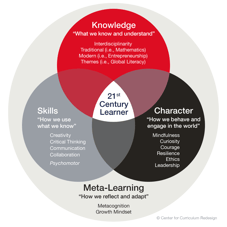 training, the next issue is to consider what learners should be learning. Preparing workers for the demands of the 21st century workplace requires learning across multiple dimensions. One model is Four-Dimensional Education developed by the Center for Curriculum Redesign, spanning knowledge, skills, character, and meta-learning. While specifically developed for children and young adult (K-12) learners, it also offers important insights for increasing the breadth and depth of corporate e-learning. Here is a snapshot of the four dimensions:
training, the next issue is to consider what learners should be learning. Preparing workers for the demands of the 21st century workplace requires learning across multiple dimensions. One model is Four-Dimensional Education developed by the Center for Curriculum Redesign, spanning knowledge, skills, character, and meta-learning. While specifically developed for children and young adult (K-12) learners, it also offers important insights for increasing the breadth and depth of corporate e-learning. Here is a snapshot of the four dimensions:
Knowledge
Knowledge is composed of the facts and information acquired through experience or education. Every job function requires specific knowledge to be mastered. In some areas, a high degree of proficiency is required such that certain knowledge and skills become “second nature”—known as “automaticity.”
Advanced AI-powered adaptive learning models can build knowledge quickly and efficiently (leaving time for other “dimensions” of learning), while also increasing knowledge retention. Such advanced models are able to predict when a learner may be at risk of forgetting content and present a “refresher” of activities as part of the learning process. The result is an optimized path to learner proficiency.
Skills
In the context of Four-Dimensional Education, skills include the 4Cs: critical thinking, creativity, communication, and collaboration. Such skills distinguish and elevate the human workforce; these are areas in which robotics and automation cannot replace humans. More recently, Fadel expanded the skills category with psychomotor skills, both “gross” (involving large muscle groups) and “fine” (smaller muscle groups). Across all occupations, there are countless psychomotor skills to be mastered, from carpenters and mechanics to nurses and doctors. Combining psychomotor skills with the 4Cs allows professionals who work with the public to gain an edge over automation in the workplace. For instance, in professions such as hairstyling, humans are highly unlikely to be replaced with robots, or any other occupation that requires a “human touch.”
Character
Character can be characterized in six areas: courage, curiosity, mindfulness, resilience, ethics, and leadership. Resilience can be seen in “grit,” described by Angela Duckworth as passion and perseverance. The more grit a person has, the more likely they are to see failure as a learning experience rather than a setback.
Meta-Learning
Meta-learning is having greater self-awareness in learning to take control of one’s habits of perception, inquiry, and learning. Two meta-learning domains are meta-cognition and developing a growth mindset. Meta-cognition is thinking about thinking, a reflection of oneself as a learner through learning goals, strategies, and results. A growth mindset encourages further development, among individuals and organizations.
Corporate e-Learning: Targeting Future Success
In summary, as the pace of change in business accelerates, there is greater risk of workers being left behind. By employing adaptive learning, corporate e-learning approach can greatly improve efficiency and effectiveness in learning. The challenges are significant, and the promise is even greater: more success for more people now and for the future.






